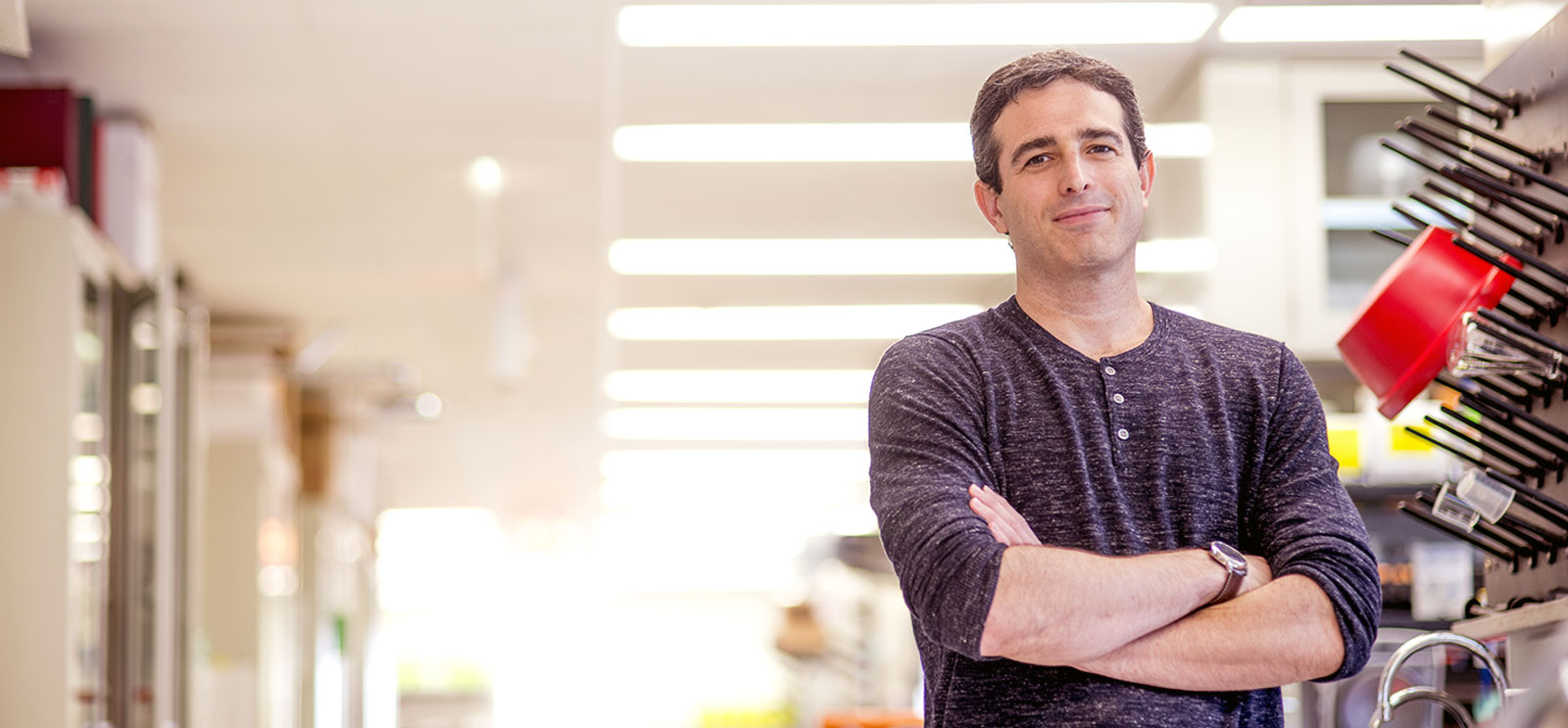
(Photography by Matthew Gilson)
When geneticist Yoav Gilad and a colleague detected errors in an influential study, Gilad took to Twitter with their finding.
Last December a study in the Proceedings of the National Academy of Sciences presented evidence for an extraordinary finding—that human and mouse tissues were genetically more different than previously thought. The authors, members of the Mouse ENCODE Consortium, concluded that gene expression in a mouse heart, for example, is more similar to a mouse kidney than to a human heart. Since mice are a near-ubiquitous tool in human genetics research, the result was field shaking. It also left many scientists puzzled.
Yoav Gilad, UChicago professor of human genetics, was one such puzzled scientist. Together with postdoctoral researcher Orna Mizrahi-Man, Gilad spent three months reanalyzing raw data from the original study. According to their analysis, the ENCODE authors did not account for “batch effects”—errors that arise from the way different batches of samples are processed during experiments. When Gilad and Mizrahi-Man removed these batch effects, the conclusion of the study reversed.
Instead of a traditional route to disseminate these critiques, Gilad tweeted the main figures from the reanalysis in April. It caused a sensation. A few weeks later in May, he and Mizrahi-Man published their full results online in the open science publication platform F1000Research. The debate was recapped in Nature and the Scientist and continues in full public view.
However, another debate has emerged. Is Twitter the right forum for scientific critique? In an interview condensed and adapted here, the Medicine and Biological Sciences’ ScienceLife blog spoke with Gilad about his decision to take science to social media.—Kevin Jiang
Why did you decide to put your results on Twitter?
The decision to go on Twitter was actually pretty impulsive. I’ve been involved in efforts to offer criticism or correction for papers through the typical channels—communicating with the original author, submitting the manuscript for review by the same journal, and submitting it to another journal if rejected. This process is very, very long, and in most cases the criticisms are either ignored or don’t receive nearly as much attention as the original report. What happens is people just go and read the paper, think about it, and then there’s usually not a lot of conversation after that. Often, years later, you find the original report still resonates more with people than the correction or criticism.
Orna and I were still working on the paper, and we had this result. I put out the main figures with a very neutral statement. The figures spoke for themselves.
What was the response like?
More than 30,000 people viewed the initial tweet. The vast majority were scientists, including students, postdocs, and faculty all over the world. Immediately people asked for more details. They tried to understand what we did and how, and started discussing the merit of our headline result. I answered that there’s a preprint on the way and that it’s probably more useful to wait for that because it’s hard to communicate more than headlines over Twitter.
In the meantime, it was widely shared, probably because the figures were pretty self-explanatory. And also partially because there’s a measure of trust. If you tweet the headline, you believe in your result.
Were you happy with how your Tweets were received?
I think that this was an example of the great advantage of social media. It just immediately took off. When the paper was put online, it was viewed nearly 10,000 times in one week. That’s a number that you get in a couple of months, for my papers at least. Somebody described it as the carriage ahead of the horses. It’s kind of true. But if we did it the other way around, I don’t think it would have received the same response.
Were there criticisms to your approach?
There weren’t when we first tweeted the figures. When the paper came out and people could see more of the details, we retweeted again. The principal investigator on the Proceedings of the National Academy of Sciences paper made a comment about breaking social norms, but I have not seen anything else.
Do you think about possible reprisal?
No, and I don’t even understand why this question comes up. We are scientists and anything that gets us faster to the truth should be encouraged. Nobody doctored their data, nobody did anything misleading on purpose, nobody did anything that we’d consider unacceptable in science.
I certainly don’t expect all my papers are right, and I don’t expect in the future that when someone finds a mistake in my papers they’ll be afraid to put it forward. If you have 100 papers and no corrections, you’re not a scientist. Because either you don’t care to correct, or you don’t believe you’ve ever made a mistake.
To read more, visit sciencelife.uchospitals.edu/2015/06/10/breaking-social-norms-a-qa-with-yoav-gilad
